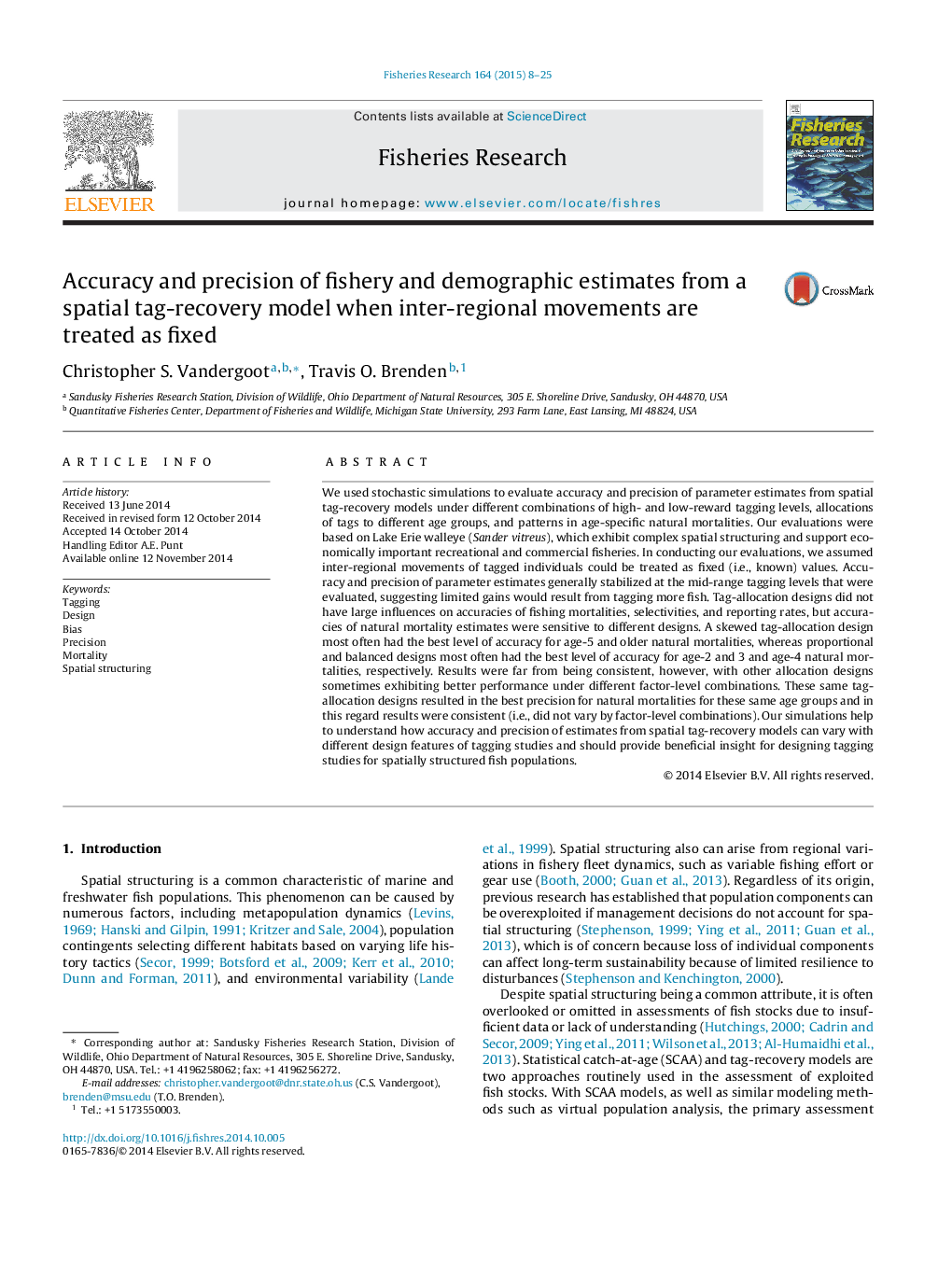| کد مقاله | کد نشریه | سال انتشار | مقاله انگلیسی | نسخه تمام متن |
|---|---|---|---|---|
| 6385658 | 1626804 | 2015 | 18 صفحه PDF | دانلود رایگان |
- Bias and precision of estimates from a spatial-tag recovery model were evaluated.
- Investigated factors were tagging levels, allocation designs, and mortality rates.
- Accuracy and precision stabilized at mid-range tagging levels.
- Tag allocation designs had the largest influence on parameter precision.
- Results yield insight for tag study design for spatially structured populations.
We used stochastic simulations to evaluate accuracy and precision of parameter estimates from spatial tag-recovery models under different combinations of high- and low-reward tagging levels, allocations of tags to different age groups, and patterns in age-specific natural mortalities. Our evaluations were based on Lake Erie walleye (Sander vitreus), which exhibit complex spatial structuring and support economically important recreational and commercial fisheries. In conducting our evaluations, we assumed inter-regional movements of tagged individuals could be treated as fixed (i.e., known) values. Accuracy and precision of parameter estimates generally stabilized at the mid-range tagging levels that were evaluated, suggesting limited gains would result from tagging more fish. Tag-allocation designs did not have large influences on accuracies of fishing mortalities, selectivities, and reporting rates, but accuracies of natural mortality estimates were sensitive to different designs. A skewed tag-allocation design most often had the best level of accuracy for age-5 and older natural mortalities, whereas proportional and balanced designs most often had the best level of accuracy for age-2 and 3 and age-4 natural mortalities, respectively. Results were far from being consistent, however, with other allocation designs sometimes exhibiting better performance under different factor-level combinations. These same tag-allocation designs resulted in the best precision for natural mortalities for these same age groups and in this regard results were consistent (i.e., did not vary by factor-level combinations). Our simulations help to understand how accuracy and precision of estimates from spatial tag-recovery models can vary with different design features of tagging studies and should provide beneficial insight for designing tagging studies for spatially structured fish populations.
Journal: Fisheries Research - Volume 164, April 2015, Pages 8-25
